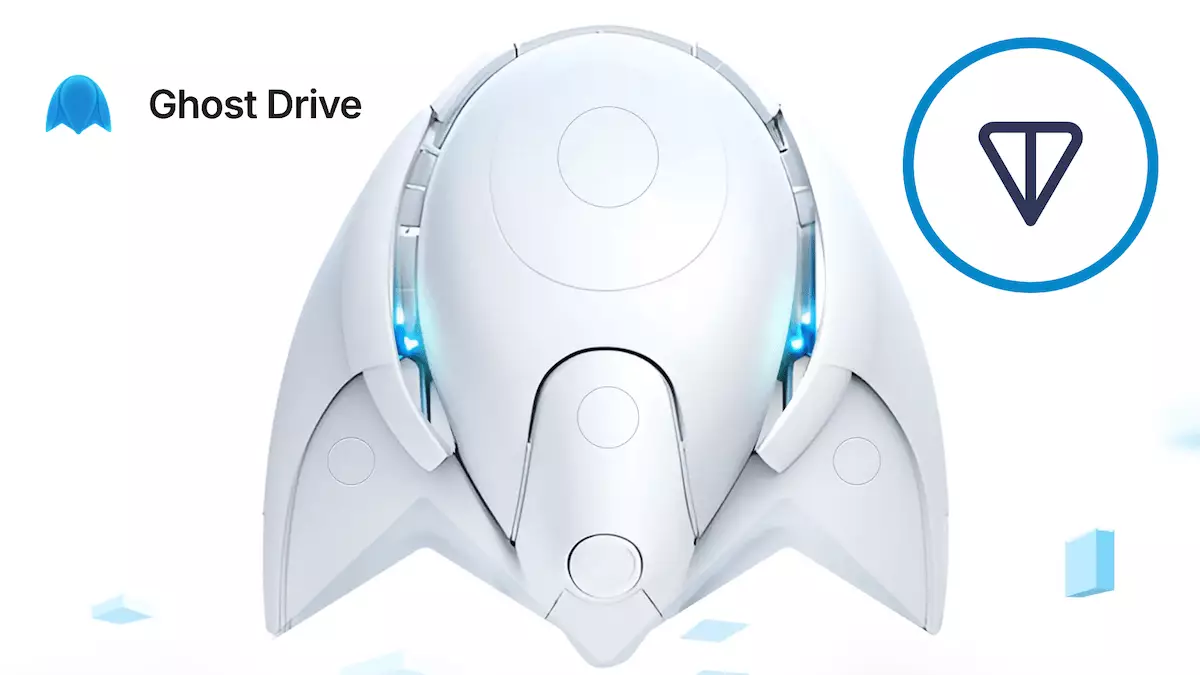Conventional cloud storage solutions have dominated the marketplace for years, providing users with a streamlined way of storing and accessing their data. However, the advent of decentralized technologies has paved the way for alternative services that emphasize user control, security, and privacy. GhostDrive, a fresh player in the Web3 storage landscape, has emerged as a promising contender, challenging traditional paradigms through innovative mechanisms that blend advanced technology with a user-centric approach.
GhostDrive, built within the Telegram Mini App framework and powered by the TON (The Open Network) blockchain, has quickly made a name for itself by attracting over 740,000 monthly users. This digital storage platform embodies the ethos of decentralization, allowing individuals to manage their data without reliance on centralized entities. Unlike established services such as Dropbox, GhostDrive’s economic model revolves around pay-per-view options, streaming, and ad networks, presenting a unique alternative for monetization in the digital storage realm. This model not only enhances user engagement but also allows for a more diversified revenue stream.
The innovative architecture of GhostDrive positions it as a front-runner in the realm of secure data management. By deploying low-Earth orbit satellite nodes, the platform has harnessed an advanced decentralized infrastructure that ensures data remains safe, censorship-resistant, and under the user’s control. This combination addresses urgent concerns regarding data privacy and security, a challenge that existing Web2 services often struggle with. By shifting control away from third-party providers, users can experience a stronger assurance regarding their digital privacy.
One of GhostDrive’s significant innovations lies in its implementation of the Decentralized Physical Infrastructure Network (DePin). This technology integrates the Layer 2 hot storage capabilities of TON with the cold storage features of Filecoin, creating a hybrid model that tackles perennial issues in the decentralized storage space. Users can expect not just lower costs associated with on-chain storage but also improved speeds for data access—two critical factors that have hindered broader adoption of decentralized solutions.
In stark contrast to centralized platforms, GhostDrive emphasizes the importance of decentralization in safeguarding user data. By distributing data across numerous nodes, the service significantly minimizes the risk of data breaches and targeted attacks—issues that are prevalent in centralized systems like Dropbox. Additionally, users retain complete control over their files: they can encrypt data directly on their devices, ensuring it remains secure even before it traverses the network. This commitment to user privacy is a crucial selling point for individuals growing increasingly wary of how centralized entities manage and exploit their data.
In keeping with the decentralized ethos, every interaction with stored data is transparently recorded on an immutable blockchain ledger. Unlike traditional storage providers that may obfuscate their operations, GhostDrive’s model allows users to verify their data interactions while enabling trust in the underlying technology. Furthermore, the tokenization of data within the TON blockchain allows users to convert files into digital assets. This functionality not only elevates the value of stored data but also creates opportunities for trading and selling files within a secure ecosystem.
GhostDrive isn’t just about providing a service; it actively aims to foster a robust community. The platform features incentive-driven programs where users can earn points and bonus storage by engaging and referring others. This contrasts sharply with the subscription models prevalent among legacy cloud service providers, which often lack engagement incentives. By actively involving users, GhostDrive creates a sense of ownership and community, enhancing user retention while also promoting organic growth.
GhostDrive stands at the forefront of a new wave of decentralized storage solutions. Its innovative use of cutting-edge technologies, emphasis on user control, and commitment to community engagement offer a compelling alternative to traditional Web2 storage options. As decentralized platforms continue to evolve, GhostDrive has the potential to set new industry standards and challenge the entrenched practices of big tech companies in the data management space. By prioritizing privacy and user empowerment, GhostDrive not only redefines the storage experience but also actively contributes to the broader movement toward a more decentralized Internet.















